Music therapy is an established practice that can be used to help children who have experienced severe trauma, or who suffer with mental health issues.
It is a particularly effective intervention for those who require support for their emotional, social, and communicative needs.
Here, you will learn what music therapy is, its core principles & benefits and how it helps to support children who have suffered early years trauma.
What is Music Therapy?
Music therapy uses music as a tool to address physical, emotional, cognitive, and social needs of individuals. Music therapists use various musical elements such as rhythm, melody, harmony, and lyrics to create therapeutic experiences tailored to the needs and goals of each person.
During sessions, individuals may engage in activities such as listening to music, playing instruments, singing, song writing, and movement to music. These activities can help individuals express themselves, improve communication skills, reduce stress and anxiety, enhance mood, increase motivation, and develop coping strategies.
Music Therapy Core Principles
The core principles of music therapy are rooted in the understanding that music is a powerful tool for promoting health, well-being, and personal growth. While the practice of music therapy can vary based on individual approaches and client needs, there are seven overarching principles that guide the profession. These core principles include:
- Client-Centred Approach: Music therapy is based on the principle of client-centred care, where the needs, preferences, and goals of the client are central to the therapeutic process. Music therapists tailor interventions to meet the unique needs and abilities of each client, recognising their individual strengths and challenges.
- Non-verbal Communication: Music has the ability to communicate emotions and experiences in a non-verbal manner. Music therapists use this aspect of music to facilitate communication and expression for clients who may have difficulty verbalising their thoughts and feelings. Through musical improvisation, composition, and listening, clients can explore and express themselves in a safe and supportive environment.
- Therapeutic Relationship: The therapeutic relationship between the music therapist and the client is fundamental to the success of music therapy interventions. Music therapists establish trust, empathy, and rapport with their clients, creating a supportive and nonjudgmental space where clients feel safe to explore and engage with music.
- Creative Expression: Music therapy encourages creative expression and self-discovery through musical activities such as improvisation, song writing, and music-making. Clients are encouraged to explore and experiment with different musical techniques and genres, allowing them to express themselves authentically and engage in the therapeutic process in a meaningful way.
- Clinical Assessment and Evaluation: Music therapists conduct thorough assessments to understand the client’s strengths, challenges, and therapeutic needs. They use standardized assessment tools, clinical observations, and client feedback to evaluate progress and adjust treatment plans accordingly.
- Evidence-Based Practice: Music therapy is grounded in evidence-based practice, drawing on research findings and clinical expertise to inform therapeutic interventions and decision making. Music therapists stay informed about current research in the field and continually evaluate the effectiveness of their interventions through ongoing assessment and evaluation.
- Interdisciplinary Collaboration: Music therapists often work collaboratively with other healthcare professionals, educators, and caregivers to address the holistic needs of clients. Interdisciplinary collaboration ensures that clients receive comprehensive care that integrates medical, psychological, educational, and social aspects of their well-being.
These core principles function as a guide for music therapists to deliver effective and ethical care that promotes health, healing, and personal growth through the transformative power of music.
The Benefits of Music Therapy
Music therapy can have a multitude of benefits for children, particularly those who have experienced early trauma. Here is a list of key benefits:
Emotional Expression
Music therapy provides a safe and non-verbal outlet for children to express their emotions, helping them to process and release pent-up feelings related to their trauma.
Stress Reduction
Engaging in music-making activities can help reduce stress and anxiety levels in children by promoting relaxation and providing a calming and soothing effect.
Coping Skills Development
Through music therapy, children can learn and practice coping skills such as deep breathing, mindfulness, and positive self-expression, which can help them better manage challenging emotions and situations.
Enhanced Self-esteem
Success and mastery in musical activities can boost children’s self-confidence and self-esteem, as they experience a sense of accomplishment and pride in their musical abilities.
Improved Communication
Music therapy can facilitate communication and expression for children who struggle with verbal communication, allowing them to communicate their thoughts, feelings, and experiences through music.
Social Skills Development
Group music therapy sessions provide opportunities for children to interact with peers, practice turn-taking, cooperation, and collaboration, and develop important social skills in a supportive and structured environment.
Trauma Processing and Resolution
Music therapy techniques such as song writing, lyric analysis, and improvisation can help children process their traumatic experiences, gain insight and perspective, and work towards resolution and healing.
Regulation of Emotions and Behaviour
Music therapy interventions, such as rhythmic entrainment and structured musical activities, can help regulate children’s emotions and behaviours by providing a predictable and structured framework for self-expression and interaction.
Increased Emotional Awareness
Engaging with music can help children develop a greater awareness of their own emotions and the emotions of others, fostering empathy, emotional intelligence, and social-emotional learning skills.
Positive Relationship Building
Music therapy promotes positive relationships between children and therapists or caregivers, fostering trust, connection, and attachment through shared musical experiences and meaningful interactions.
How is Music Therapy Used for Childhood Trauma?
Music therapy can be a valuable tool for children who have experienced early years trauma, helping them to process their emotions, build coping skills, and develop healthy ways of expressing themselves. Here are six examples of how music therapy can be used to help children who have suffered trauma develop key skills and understanding:
- Improve Emotional Expression: Children who have experienced trauma may struggle to express their emotions verbally. Music therapy provides a safe and non-verbal outlet for them to express their feelings through music. They can choose instruments, melodies, or songs that resonate with their emotions, allowing them to communicate in a way that feels comfortable and natural.
- Regulating Emotions: Trauma can often lead to dysregulated emotions and heightened stress responses. Music therapy techniques, such as rhythmic breathing exercises or guided relaxation with soothing music, can help children learn to regulate their emotions and manage stress more effectively. This can contribute to a sense of calm and stability in their lives.
- Build Trust and Connection: Trust is essential in therapeutic relationships, especially for children who have experienced trauma and may have trust issues. Through collaborative music-making activities, such as playing instruments together or singing songs as a group, children can develop trust and a sense of connection with their music therapist and peers in a supportive environment.
- Narrative Processing: Music can serve as a powerful tool for storytelling and narrative processing. Children can create songs or musical compositions that represent their experiences, thoughts, and feelings related to the trauma they have endured. This creative process allows them to externalize their experiences, gain perspective, and begin to make sense of their story in a safe and supportive space.
- Develop Coping Skills: Music therapy offers opportunities for children to develop coping skills and resilience in the face of adversity. Through improvisation, song writing, or lyric analysis, children can explore and practice coping strategies that can be applied in challenging situations outside of the therapy session. This empowers them to navigate their emotions and experiences more effectively in their daily lives.
- Promote Social Skills: Trauma can impact a child’s ability to form and maintain healthy relationships with others. Group music therapy sessions provide a structured and supportive environment for children to interact with their peers, practice social skills, and build positive relationships through shared musical experiences.
Music Therapy in Practice
Scenario: Imagine a 7-year-old girl named Emily who has experienced neglect and abandonment in her early years, leading to trust issues and difficulty forming connections with others. Emily has recently been placed in foster care and is struggling to open up to her new caregivers and therapist.
In this scenario we will look at how a music therapist will help Emily overcome her trust issues from previous experiences and begin to make a meaningful connection with a new adult in her life.
Stage 1: Establishing Safety and Rapport. The music therapist begins by creating a safe and welcoming environment for Emily. They ensure that the space is inviting, with comfortable seating and a variety of musical instruments available. Emily is greeted warmly and is reassured that the sessions is a place where she can feel safe to express herself.
Stage 2: Exploring Musical Preferences. To begin building rapport, the therapist engages Emily in a discussion about her favourite types of music and songs. Emily expresses a love for upbeat pop music, with her favourite artist being Taylor Swift. She mentions that she enjoys singing along to songs she knows. The therapist validates Emily’s preferences and suggests they listen to some of her favourite songs together.
Stage 3: Collaborative Performance. The therapist invites Emily to choose a song to sing together. Emily selects a popular song she knows well. As they sing, the therapist joins in on an instrument, such as guitar or keyboard, accompanying Emily’s vocals. Through this shared musical experience, Emily begins to feel a sense of connection with the therapist, as they collaborate and communicate through music.
Stage 4: Creating Music Together: Building on the rapport established through singing, the therapist suggests that they create their own song together. Emily is intrigued by the idea and expresses interest in writing lyrics about her feelings. The therapist provides prompts and guidance to help Emily articulate her emotions through song lyrics, using metaphors and imagery to express her experiences.
Stage 5: Improvisation and Musical Play. To further deepen the bond between Emily and the therapist, they engage in musical improvisation and play. The therapist suggests they create a musical story together, where Emily plays a character in the story and the therapist provides musical accompaniment to enhance the narrative. Through this playful and imaginative activity, Emily feels a sense of agency and control, allowing her to gradually let down her guard and further trust the therapist.
Stage 6: Reflection and Validation. At the end of the session, the therapist reflects on the musical experiences shared with Emily and validates her contributions. They acknowledge Emily’s bravery in expressing herself through music and emphasize that her feelings and experiences are important and valid. The therapist reassures Emily that they will continue to explore music together in future sessions, fostering a sense of continuity and trust in their therapeutic relationship.
Through these music therapy interventions, Emily begins to develop trust and connection with the therapist. They form bonds over shared musical experiences and collaborate in a supportive and nurturing environment.
Over time, Emily’s ability to form connections and trust others may improve as she shares more experiences with her therapist and begins to open up more with her foster carers.






0 Comments